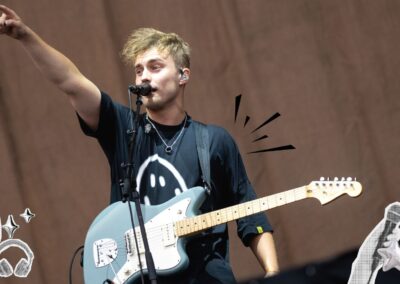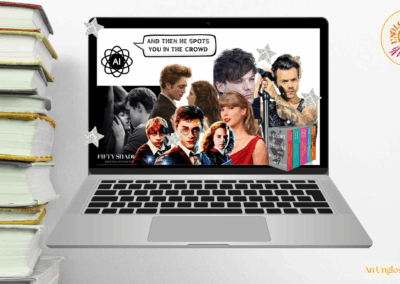In the Love Island villa, beauty isn’t just skin deep, it’s currency. Here, we unpack how race, body type, and Eurocentric beauty ideals shape who gets desired, protected, and rejected on-screen, and what that teaches viewers about desirability in real life.
Zara was “too much.” Mehdi barely got screentime. Yewande was picked last in the recoupling. Love Island has always claimed to be a social experiment, and in many ways it is, but for me, it’s less about love, and more about who gets to be loved. Through its flirtatious one-liners and savage recouplings, the show quietly teaches its millions of viewers a brutal truth: beauty is a hierarchy, and only certain types get to sit at the top.
Because Love Island isn’t just about chemistry, it’s about currency. It’s a show where being deemed attractive opens doors: to screen time, romantic attention, even brand deals once the villa closes. And being “not their type on paper”? That’s not just a rejection. It’s a reflection of something much deeper, about how society assigns value to certain bodies, faces, and features, and how others are left on the sidelines.
Pretty privilege isn’t just about being attractive, it’s about how that attractiveness makes your life easier. As culture writer and lecturer Kovie Biakolo puts it, “Pretty Privilege means that people who present with certain features are given the benefit, the privilege, of easier navigation through life. In the reality TV context, it means that the features that we have deemed attractive allow for certain people to navigate the experience much more easily than others.”
We see it in the villa from day one. Certain contestants are instantly pursued, chosen in coupling ceremonies, and shielded from drama, while others, often just as funny, kind, or emotionally open, fade into the background, are stuck in ‘friendship couples’, or are quietly dumped. “When we talk about navigating the experience of pretty privilege, I want people to understand that there are very real material consequences that are attached to it, it’s not just about who finds you attractive.” Kovie says. “Dating is tied to money. It’s tied to job opportunities. It is tied to sociability, which is tied to how we functionally move through the world, and I think that’s really important to consider.”
But the game doesn’t stop with the Islanders. The audience, too, plays a role in reinforcing the beauty hierarchy. Time and time again we see twitter memes, viral TikToks, and vote-offs tending to favour the same kinds of faces: Eurocentric features, slim bodies, and straight hair. Kovie echoes this, saying “From birth, we’ve been fed the same media images of who is considered beautiful, so when a contestant matches that mould, we instinctively root for them, even if we don’t realise why.”
So Love Island doesn’t just reflect the beauty standards of the moment, it reinforces them in high definition, every single night at 9pm. And while the show may claim to celebrate “all types,” the kinds of bodies, faces, and features we consistently see at the centre of romantic attention say otherwise.
The danger isn’t just limited representation, it’s misrepresentation. When a single contestant of colour is cast each year, they’re often reduced to a ‘token’, burdened with representing an entire community rather than simply existing as themselves. “The audience projects a lot onto that person,” Kovie explains, “and they rarely get to have their own experience. They’re performing for everyone.” When that one person is consistently left unmatched, rejected, or sidelined, it doesn’t just shape the show’s narrative, it shapes how viewers see themselves. Especially in majority-white countries like the UK, the repeated rejection of contestants of colour can send an insidious message: that they are less desirable, less lovable, less worthy.
And it’s not just who’s chosen, but who’s doing the choosing. Gender politics also play a key role here, as Kovie points out how men of colour on the show often don’t choose women from the same racial community, which adds another layer of internalised bias and racialised desirability politics into the mix.
But Love Island doesn’t just reflect how attraction works, it subtly scripts it. Every recoupling, every rejection, every “not my type on paper” becomes part of a bigger message about who deserves to be desired. And when those messages are repeated night after night, they tend to stick.
“I’m always concerned about what messages are being reinforced,” says Kovie. “Television has the power to create new meanings, but when it doesn’t, when it keeps showing the same kinds of people being chosen and others being rejected, that has an impact, especially on young people.
“When you’re only showing particular communities getting rejected, and doing it over and over again, it creates a belief system. It reinforces the idea that certain people are just not desirable, not even just by other races, but sometimes by people within their own communities.”
Even in moments that are meant to feel lighthearted, the show’s patterns reflect a deeper problem. As Kovie explains, “You see a fat woman, or even just someone who isn’t thin, and people assume a man won’t be attracted to her, but that’s not reality. People outside of these narrow ideals do experience love, desire, connection. But Love Island rarely shows us that.”
And that’s the issue. Not rejection itself, which, as Kovie rightly points out, is a universal and even necessary part of life, but the way rejection on screen is so often reserved for people with marginalised identities. If you’re only ever seeing people who look like you being left behind, voted out, or friend-zoned, it’s hard not to absorb the message that you’re less worthy of love.
These shows may claim to be about finding “the one,” but for viewers at home, especially young women, they also shape ideas of beauty, value, and romantic potential. And when those ideas go unchallenged, the damage quietly deepens.
So can a show so tightly built around aesthetics really subvert the very beauty norms it profits from?
According to Kovie, it’s complicated. “Reality TV, like Love Island, both represents and reinforces our biases,” she says. “It’s not just about the producers, it’s about us too. These shows reflect what society finds desirable. And unless we start shifting those cultural standards, the show alone isn’t going to do it for us.”
That doesn’t mean change is impossible. But it does mean the foundations would need to be rethought. Not just casting one plus-size contestant or one Black woman each season, but interrogating who’s doing the casting in the first place. As Kovie points out, “We need people who are actually trained to recognise different types of beauty, people who understand how beauty looks across cultures, communities, and identities.”
She compares it to the modelling industry, where there’s at least a working understanding that multiple kinds of beauty can coexist on one runway. “I’m not saying fashion is perfect,” she adds, “but even in its flaws, there’s more nuance than what we’re seeing on reality TV, especially in the UK, where the version of desirability still feels very… vanilla.”
Her advice? Enjoy the mess, but keep a little distance. “I live in a space where I sometimes watch reality TV because I just like the mess. But I also watch it critically, because it’s my job. I think that’s what I’d want, for the audience to be more critical and understand that you can both enjoy something and also have a lot of criticism for it.”
Because while Love Island might not be able to fully rewrite beauty standards, it can at least start telling a more inclusive story. And it’s up to all of us, producers, viewers, and culture writers alike, to demand one that finally looks more like real life.

To find out more about Kovie Biakolo, please visit https://koviebiakolo.com/about-us/










